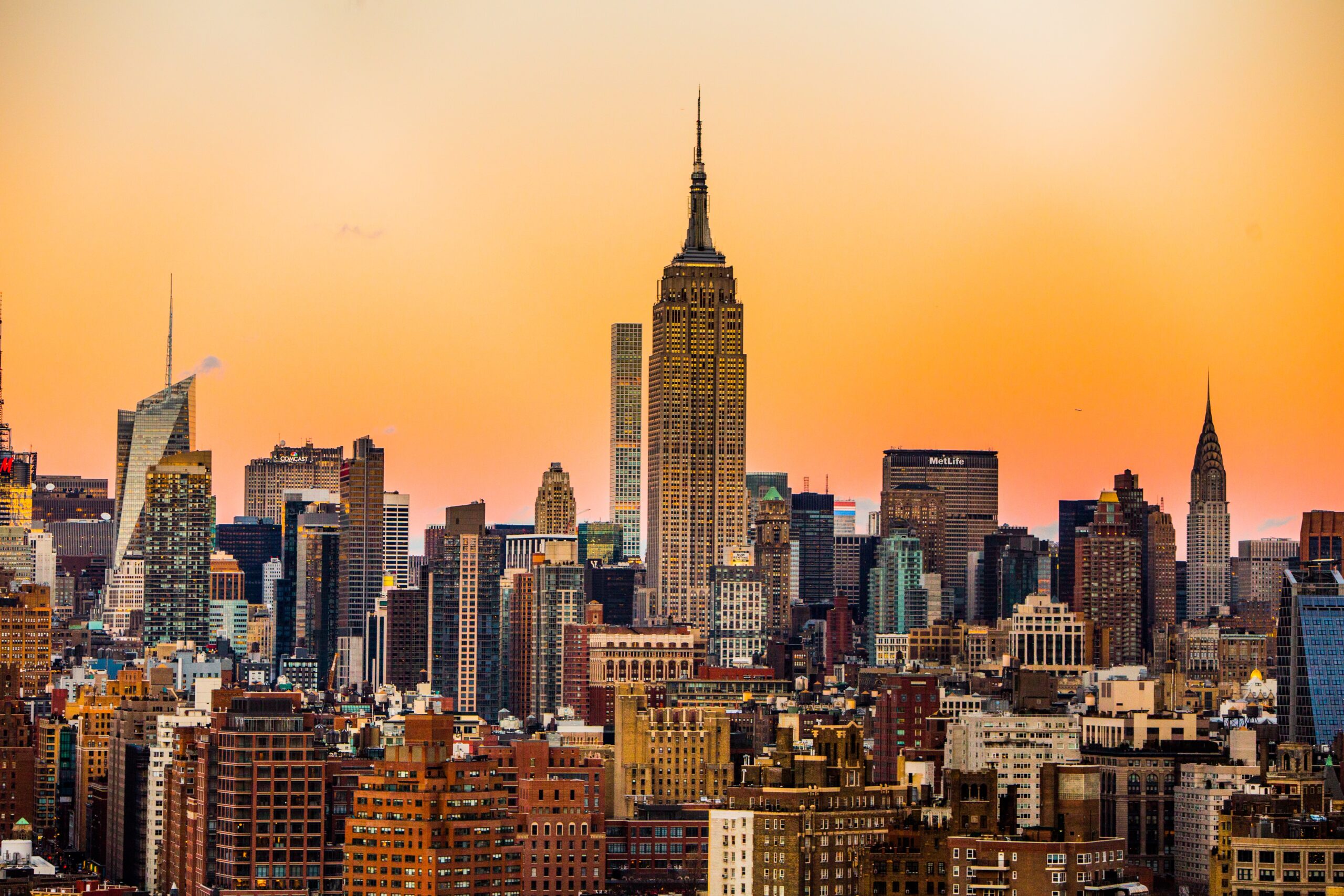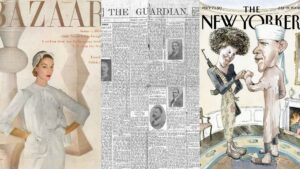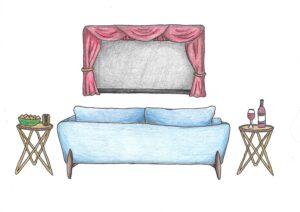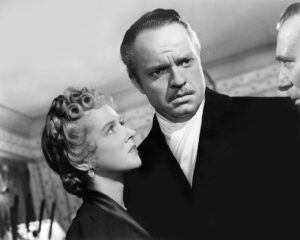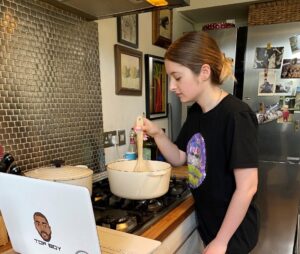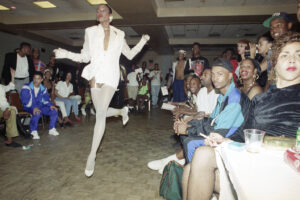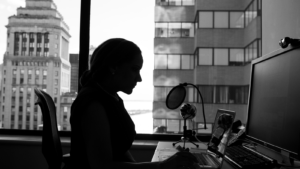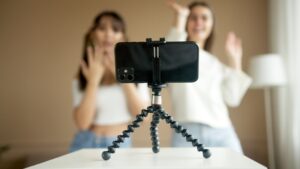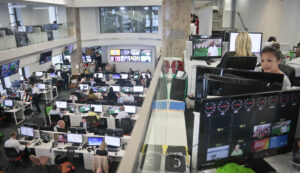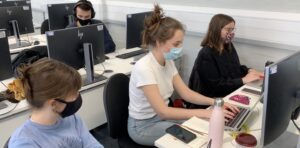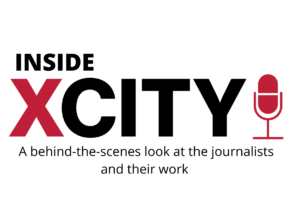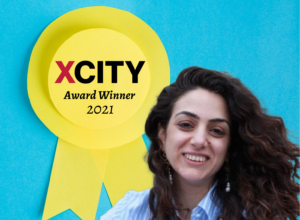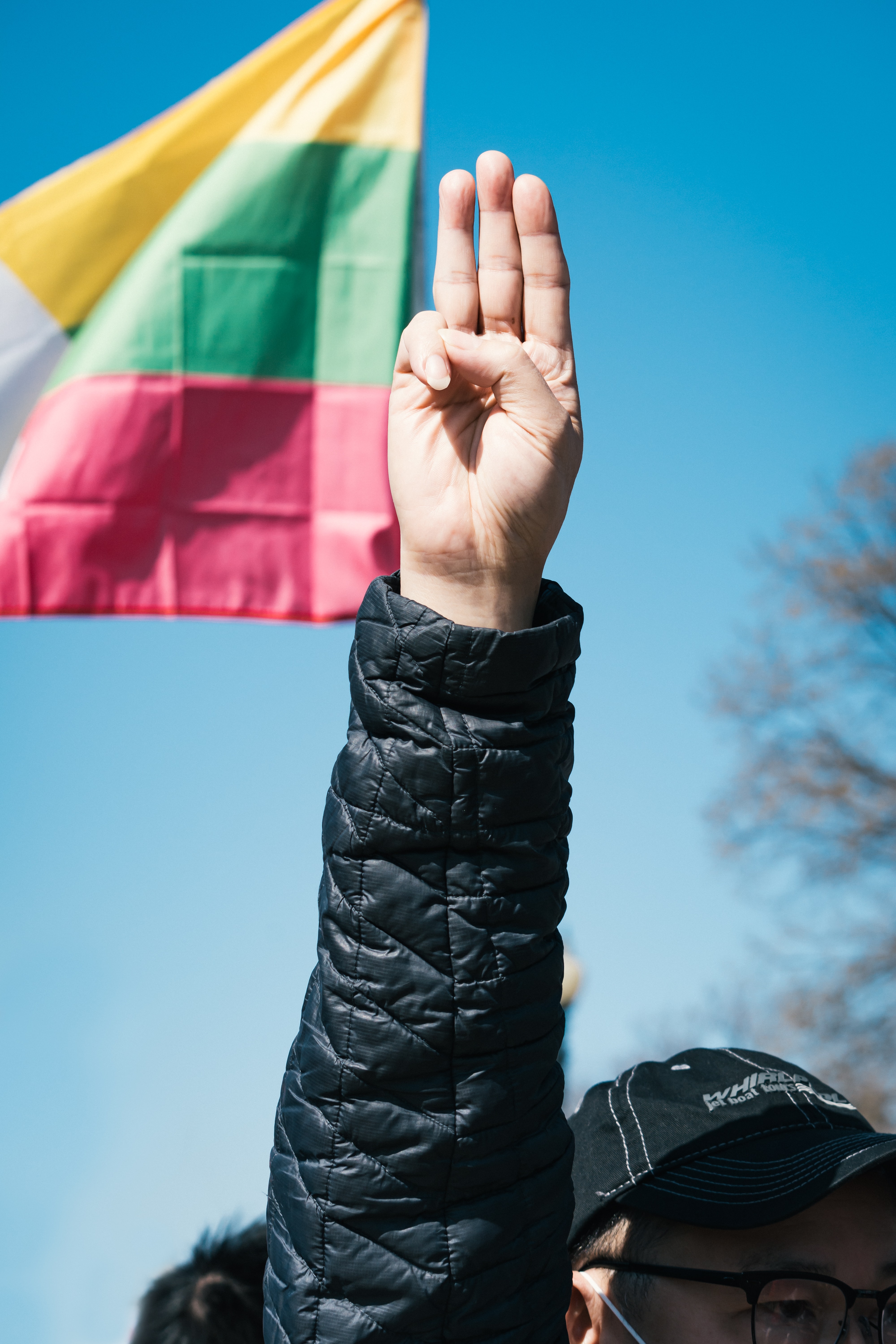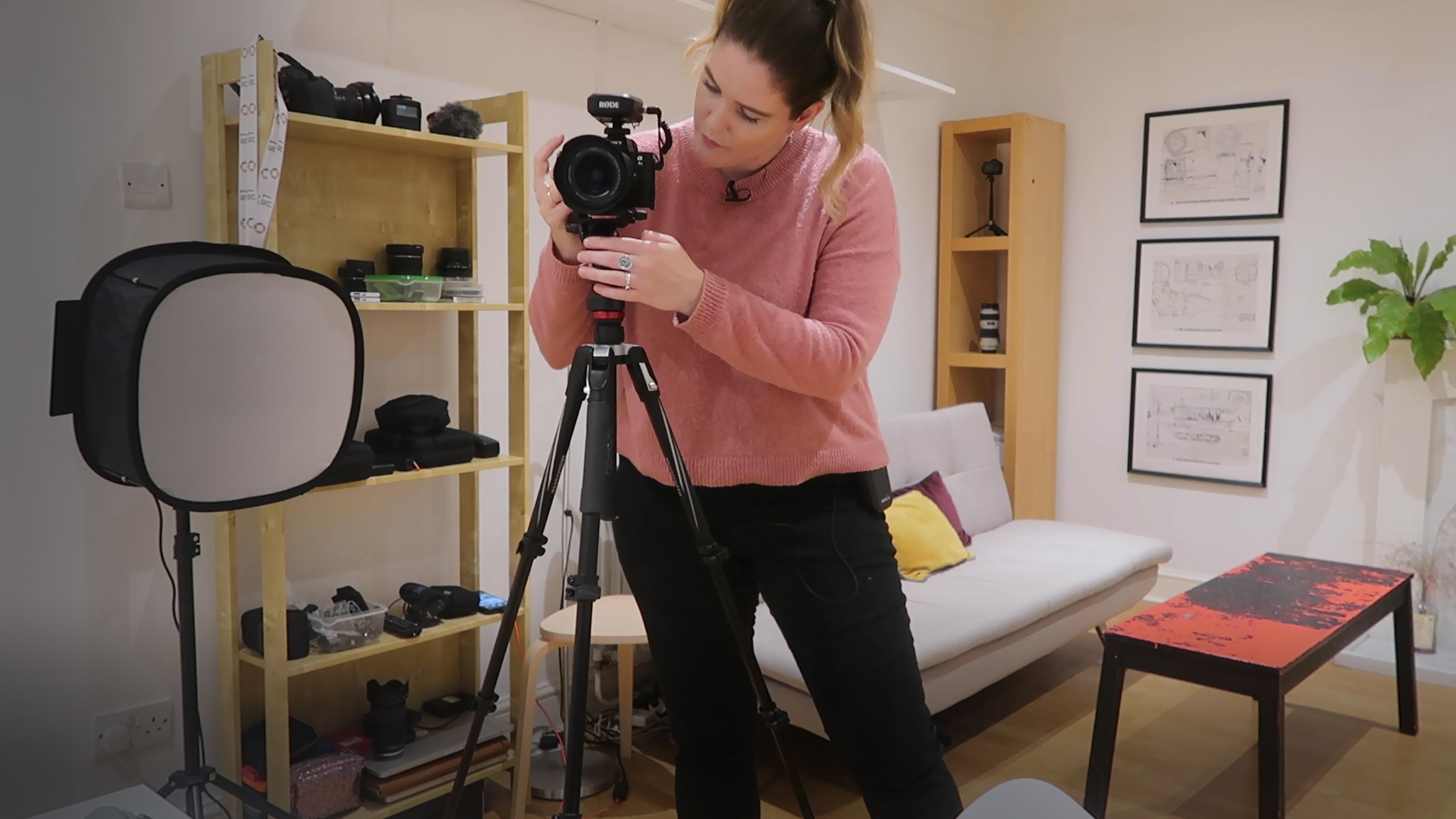
When your living room becomes the studio. Image: Ali Rae
Frankie Lister-Fell speaks to Al Jazeera producer Ali Rae about working from home as a documentary maker during the pandemic.
Like many television journalists under lockdown last April, Al Jazeera’s senior digital producer Ali Rae was frustrated that on-the-ground reporting and filmmaking had paused. There’s little one can produce from the confines of one’s home. Or so you might think.
Overcoming the typical production prerequisites, Rae presented, produced, filmed and edited a five-part documentary series. All Hail The Lockdown, a series exploring the global consequences of COVID-19, was made entirely from her 25 square-metre living room in east London.
She was helped by her remote teammates: executive producer Meenakshi Ravi, production assistant Ben Walker and animators Pierangelo Pirak and Cosimo Kirico. The second season of All Hail accrued more than 1,500,000 views after its first round of promotion.
“Last spring, lots of media outlets were covering the unfolding crisis as it was happening. All these stats and big numbers. But not many outlets were looking at the meta-issues, the things that bind us together on a global scale,” Rae explains.
“Whether I’m receiving editorial feedback on a draft script from my executive producer or sending files to a remote animator – collaboration is always key”
Looking beyond the daily news briefings and minute-by-minute updates, Rae’s series examines the social and political ramifications of COVID-19 in countries across the world, including India, Spain, China and Brazil.
Despite not being able to visit the far-flung countries All Hail spotlights, Rae has found value in the working from home documentary-making process and sees it creating more opportunities for more collaborative projects in the future. And she can now add a host of niche skills to her CV, including making a floating dolly (a camera wheeled on a cart down a track) from a skateboard.

“I missed bouncing ideas off colleagues in our office,” Rae reflects, “but even in lockdown projects like these are never truly done in isolation. Whether I’m receiving editorial feedback on a draft script from my executive producer or sending files to a remote animator – collaboration is always key.”
There were other factors too, besides her remote teammates, which helped Rae complete such a project from the confines of her flat.
As a multi-skilled creative, Rae already owned camera and mic kits. She used three different cameras for All Hail: a Sony A7 III, Canon G7X and a GoPro-esque camera, DJI Osmo Action. Alongside this, she used a Neewer lightbox, Freeworld monitor and RØDE lapel & Blue Yeti microphones.
“The only barrier to speaking to someone was a good WiFi connection”
Rae was no stranger to filming either. “I have a background in teaching and multimedia production. So filming and editing are skills I’ve been able to develop over the years through different projects.”
She had previously produced a five-part docuseries in 2019, All Hail The Algorithm, which saw her investigate the impact of algorithmic systems on our everyday lives, travelling to the USA, Mexico, Jordan, Australia, and Kenya. She’s worked as a digital journalist at Al Jazeera since 2014.
Coupled with her multimedia experience was an opportunity created by the pandemic: a world of experts working from home, with much freer schedules, “The only barrier to speaking to someone was a good WiFi connection.” Author, scholar and activist Arundhati Roy in India and environmental journalist George Monbiot in the UK were among those that gave vital insights into the social and ecological disasters coinciding with the pandemic.
Working for such a large media organisation, Rae also had access to Al Jazeera’s global archival footage. And crucially she was given eight months to bring everything together – an important time frame when grappling with temperamental WiFi. “The issue with working remotely is I had to transfer and download all this archival footage on comparatively slow WiFi. So that’s one production hurdle that you have to take into account.
“Another hurdle Rae managed to overcome was making a static setting, her living room, dynamic and distinct from the usual pandemic footage of talking heads over Zoom with a bookcase in the background”
“And then the other thing to consider is that you often can’t see the archival footage before you download it, so the quality might not be the best, or it might not be what you’re looking for. But you sometimes have to wait for it to be sent from Doha to London, then they’ll digitally transfer it over to you, which can take a little while.”
Another hurdle Rae managed to overcome was making a static setting, her living room, dynamic and distinct from the usual pandemic footage of talking heads over Zoom with a bookcase in the background.
When interviewing people, Rae’s footage switches from the classic webcam view of her speaking into her laptop to another camera positioned on a tripod behind her, framing the back of Rae’s head looking at her screen. This gives a behind-the-scenes feel, but also emphasises the authenticity of the production process – this is one journalist, making a documentary series from home during a pandemic.
To help explain more complex topics, the walls of Rae’s home were turned into a conceptual backdrop (a greenscreen) for explainer animations created by her two animators based in Italy. This helped enliven Zoom interviews, such as providing accompanying visuals to tech writer Evgeny Morozov’s explanations of tech solutionism. The frame starts with Morozov talking via video chat then it zooms out to a digitised representation of a noticeboard where lines grow from the original frame of Morozov to trace relevant infographics in squares.
“Of course, we could have downloaded nice pre-made templates, but we wanted to situate each graphic in the home to reinforce the lockdown theme. That’s why each explainer starts as a photo ‘frame’ on my wall, to metaphorically represent windows into the lived experiences of others around the world.

“The opening to each episode also uses a different filming technique. Given the amount of COVID-19 coverage, we wanted to make it creative and engaging, while still being journalistically robust.” Rae used space morphing techniques (where one image, shape or animation seamlessly transitions into another), green screen masking, stop motion and 360-degree filming – achieved by mounting her camera on a rotating tripod mount – to commence each episode. Rae also reveals how the complex opening sequence was created.
After giving her animators in Italy, Pirak and Kirico, a rough idea of what she was looking for – something that illustrates the mundane routine of lockdown – Rae filmed herself around her flat in a high-definition 4K and then sent them the massive files to begin playing with. Once the team was happy, the final version was edited into each documentary.
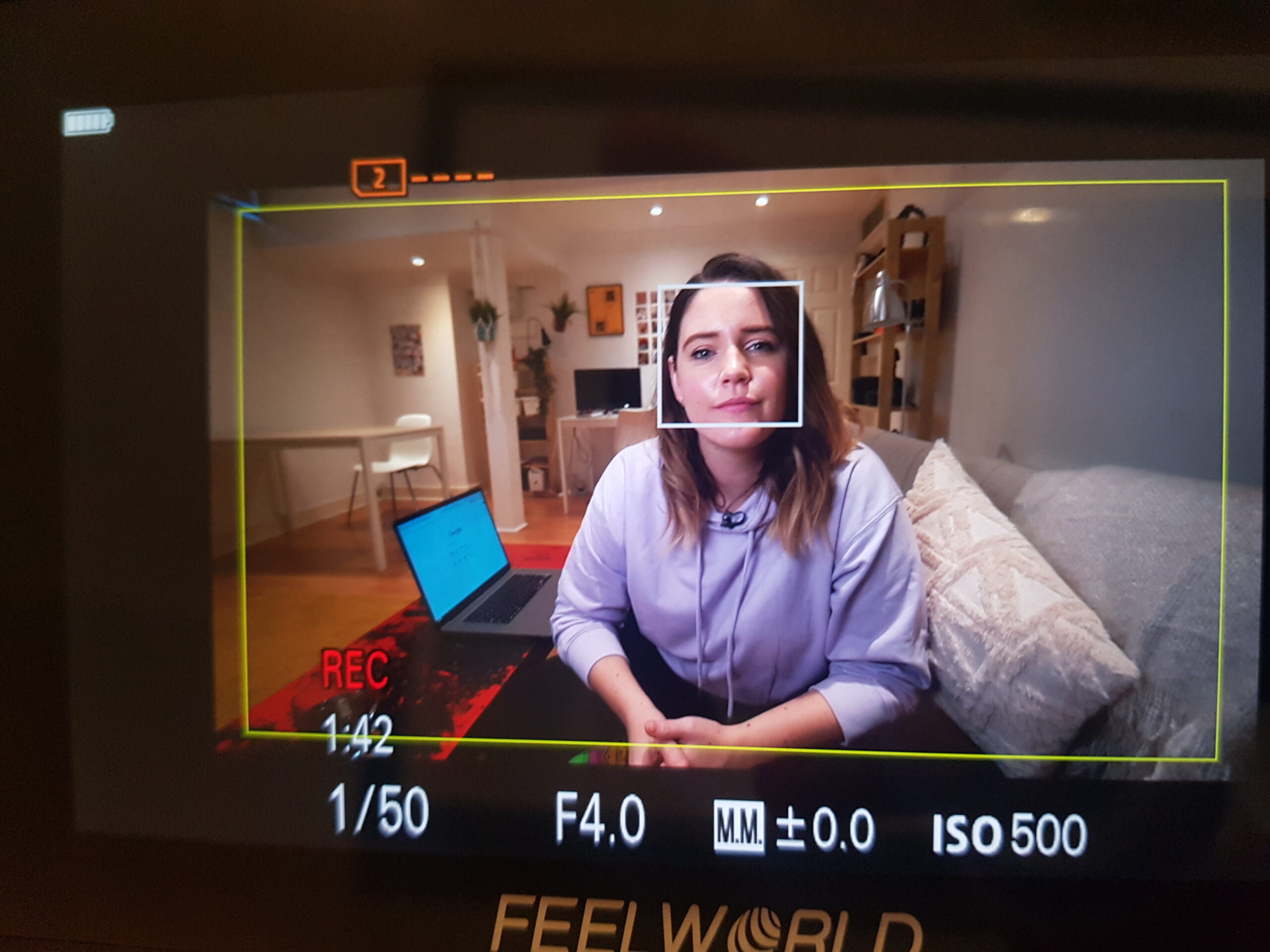
Rae also created her own budget floating dolly, a device that huge film production companies normally use to enable a camera to track forwards and backwards, as though it’s floating. Think Stanley Kubrick and Alfred Hitchcock.
“I didn’t have the space to lay down a professional camera track, so instead I used a skateboard and attached a gimbal [a pivoting support device that allows a camera to rotate smoothly] on top of it to keep the camera stable. I simply pushed two desks together and rolled it down the middle,” she explains. “It’s great when an idea works out – but it can also be stressful stretching yourself creatively, while also managing the other aspects of the series as well.”
THREAD 👇
We are in the midst of a global emergency – and COVID-19 is a symptom.@hey_alirae looks at why the environmental crisis will make COVID-19 look easy to handle. #AllHailTheLockdown pic.twitter.com/QBArBdhLwm
— Al Jazeera English (@AJEnglish) December 22, 2020
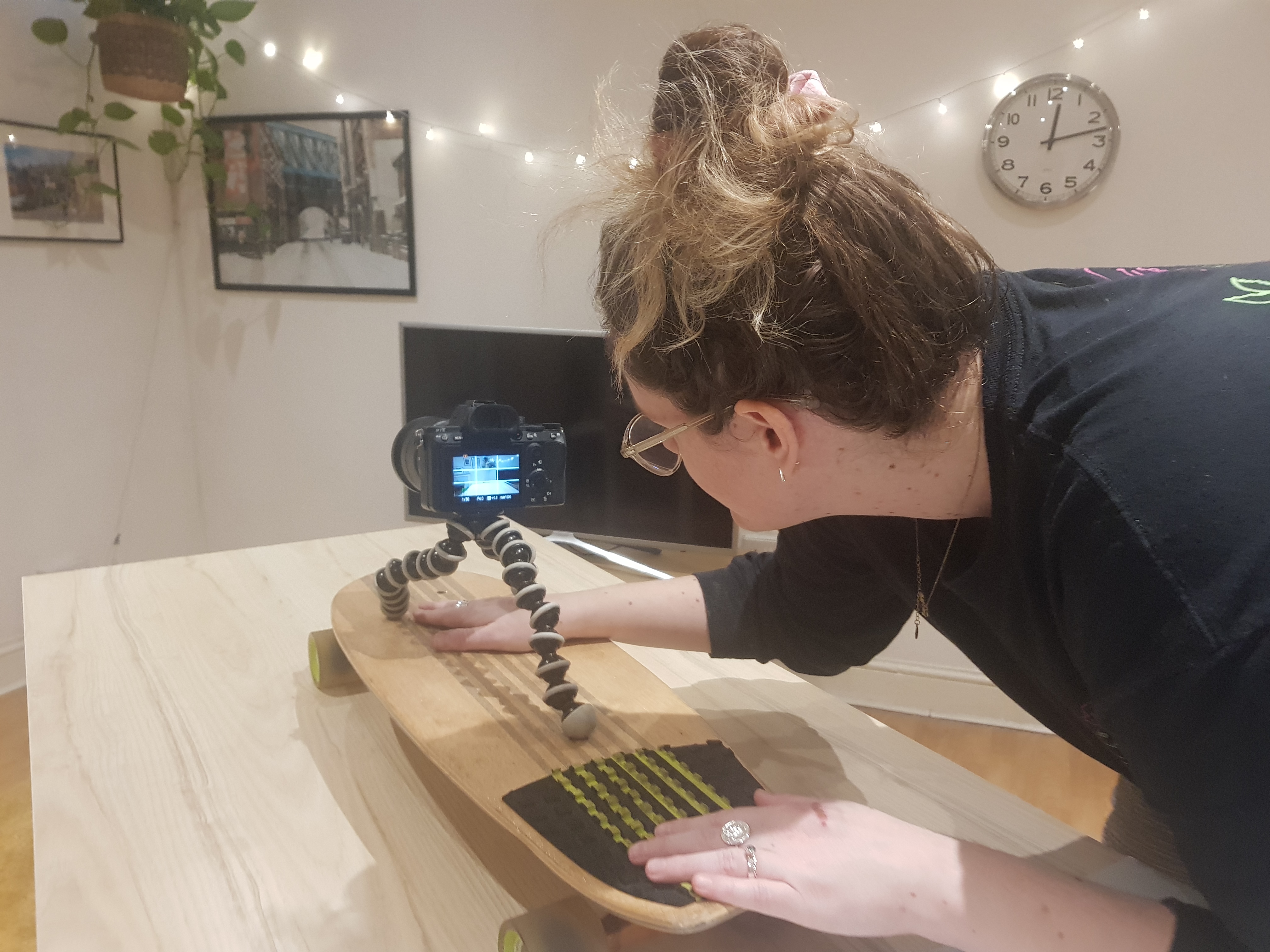
But the stress paid off. Rae credits her expert interviewees for their prescient insights. “I look back at what they said, which was in early April 2020, and it’s like they knew exactly how this pandemic was going to play out,” Rae says.
She cites their thoughts on contact tracing apps as an example. “My interviewees were sceptical about the role of digital contact tracing from the get-go. They questioned the validity of how the apps work, and instead reinforced the need for meaningful investment in healthcare system capacity and robust traditional contact tracing. Sure enough, the UK for instance ended up initially hiring 18,000 people to work on contact tracing. Despite all the hype, these apps didn’t allow us to return to pre-Covid normality.”
“If you can build successful working relationships despite the challenges of remote working, there’s a real opportunity to consider flexibility in terms of where people are based for future projects”
Having come out the other side of the pandemic (nearly) and her lockdown documentary series, what has Rae learnt about the filmmaking process?
“The big thing I had to grapple with was navigating the broadcast specs for TV, which would normally be done at our broadcast centre in the Shard. There are a bunch of technical hurdles pre and post-production you need to meet in order for something to be broadcast on TV.
“For example, you need to meet broadcast specs for photosensitivity levels, audio levels, branding on-screen, and even provide detailed documents that outline copyright information for every bit of footage used.
“This process has made me realise that if you can build successful working relationships despite the challenges of remote working, there’s a real opportunity to consider flexibility in terms of where people are based for future projects. It has opened up my thinking for collaboration around the world – and that’s exciting.”

